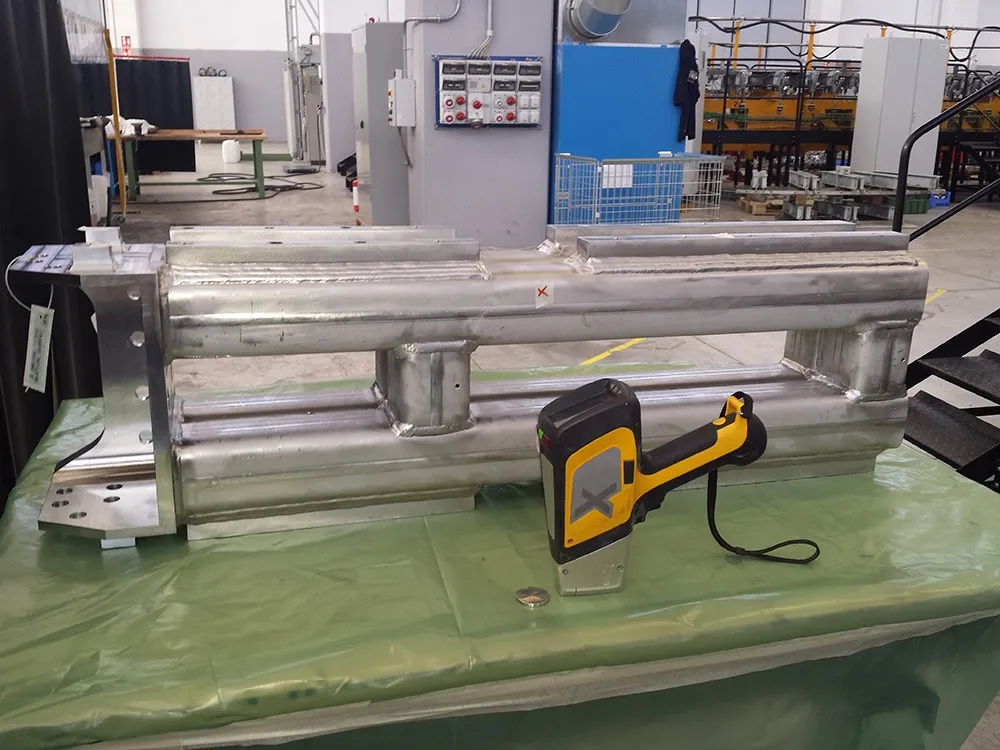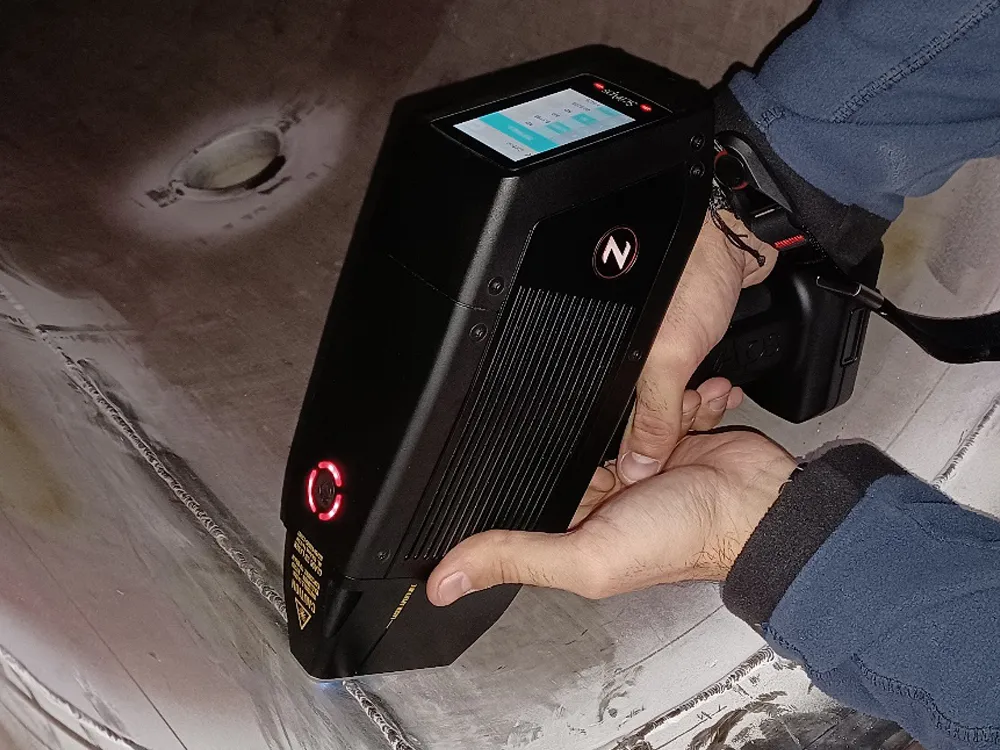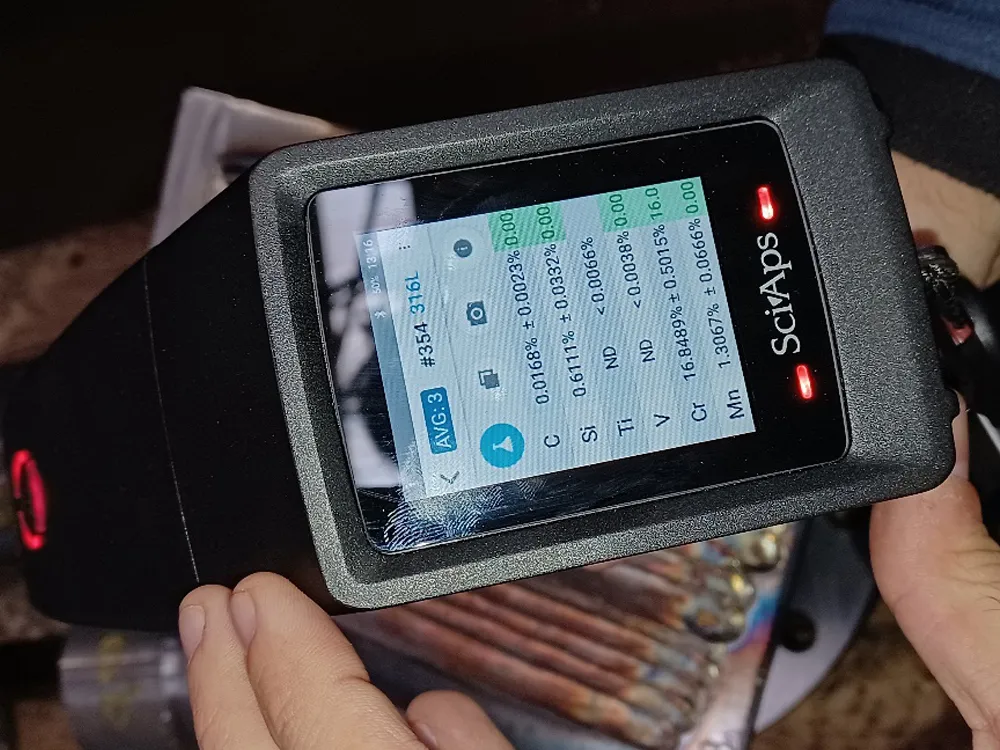
Magnetic Particles
12 February 2025
Penetrating liquids
12 February 2025CHEMICAL ANALYSIS
LIBS ANALYZERS
SciAps Z902C Libs Analyzers
LIBS =Laser Induced BreakdownSpectroscopy.
LIBS technology enables both qualitative and quantitative analysis by means of the optical spectrum emitted by the plasma generated by the interaction between a high-power laser radiation and the sample. In the most common case, the sample will be a metal alloy, steel, stainless steel. During plasma expansion, inelastic electron collisions with heavy particles drive the main processes of binding electron transition between different energy levels, while the concentration of charged particles within the plasma is controlled by the processes of electron impact ionization and three-body recombination. One of the advantages and convenience is the use of the sample without the need for pretreatment.The Z902C can determine the sum of Cr, Ni and Cu with the following conditions:
- If carbon <0.18%, then Ni + Cu <0,15%{{{wpml_tag_3}}} {{{wpml_tag_4}}}Se il carbonio> = 0.18%, then Cr + Ni + Cu <0.15%.
- Nb <0.02
- V <0,02
- Nb + V <0.03%.
- EC (carbon equivalents) <0.43
How does LIBS technology work?
LIBS =Laser Induced BreakdownSpectroscopy.
LIBS technology enables both qualitative and quantitative analysis by means of the optical spectrum emitted by the plasma generated by the interaction between a high-power laser radiation and the sample. In the most common case, the sample will be a metal alloy, steel, stainless steel. During plasma expansion, inelastic electron collisions with heavy particles drive the main processes of binding electron transition between different energy levels, while the concentration of charged particles within the plasma is controlled by the processes of electron impact ionization and three-body recombination. One of the advantages and convenience is theuse of the sample without the need for pretreatment.











